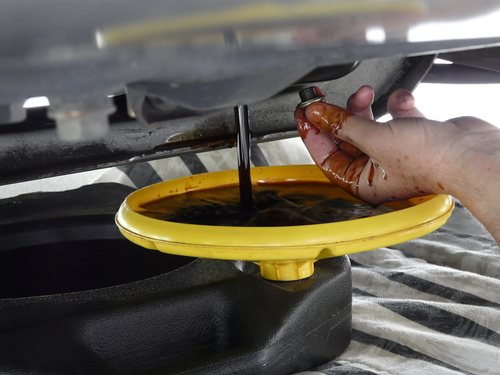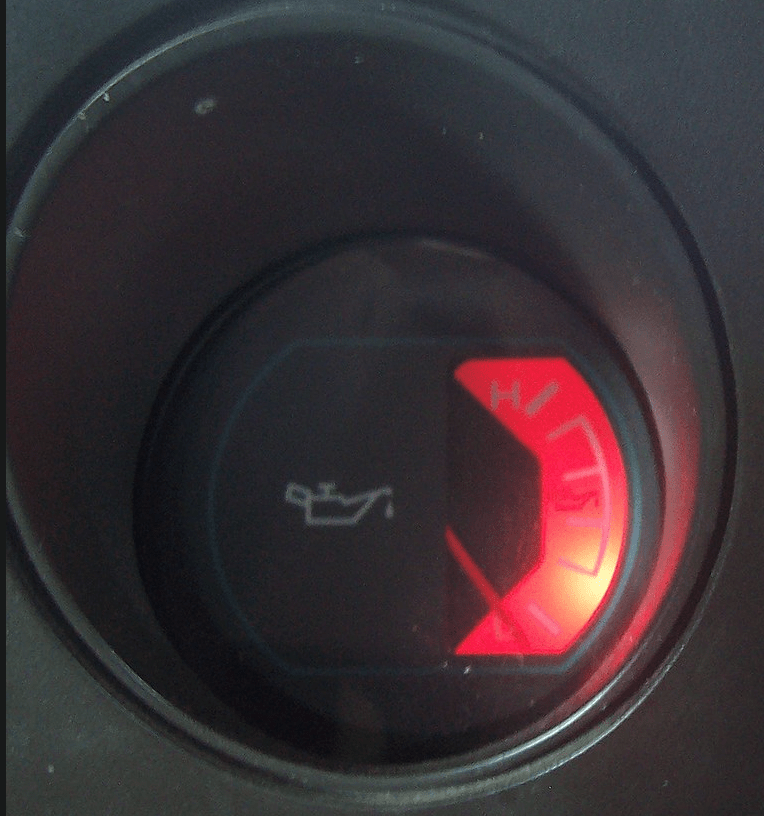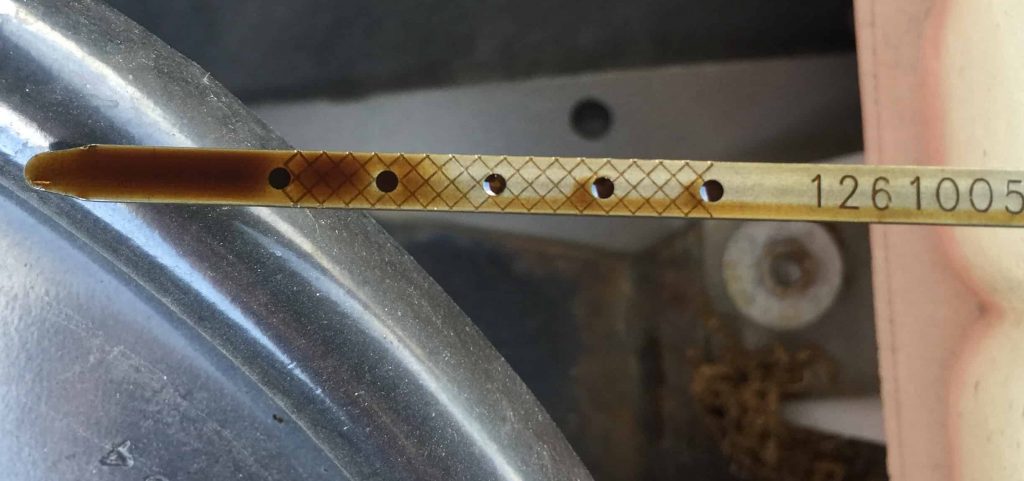
Regular engine oil changes are essential for maintaining the health and performance of a vehicle. Over time, engine oil can degrade and lose its effectiveness, making it necessary to replace it at regular intervals.
When an oil change becomes overdue, various symptoms can occur, potentially causing damage to the engine and affecting the vehicle’s overall performance.
These symptoms can vary in severity and may not always be immediately obvious, but recognizing these signs early is crucial for preventing irreversible damage to crucial engine components.
Below, we will explore the different signs that indicate a vehicle’s engine oil change is overdue. Awareness of these indicators will help drivers maintain their vehicles in peak condition and prevent costly repairs in the long run.
Overdue Oil Change Symptoms

Regular oil changes are essential to keep your car or truck running smoothly and efficiently. Overdue oil changes can result in various symptoms that indicate your engine is not functioning at its best. This section will discuss some of these symptoms in detail.
Warning Lights and Dashboard Signals

One of the first signs of overdue oil change symptoms is the appearance of warning lights on your dashboard. These lights serve as indicators that your vehicle requires attention, and in this case, an oil change. Some common dashboard signals include the check engine light and the oil pressure light.
Engine Performance Issues

Overdue oil changes can negatively affect your engine’s performance. Issues like hard starting, idling problems, and reduced power can all be red flags that your vehicle is in need of an oil change. Additionally, poor fuel economy is another performance-related symptom that can result from not regularly changing your oil.
Dark or Dirty Oil

Checking your oil’s color and consistency can help you determine if it’s time for an oil change. Over time, oil becomes dark and dirty as it collects contaminants from the engine. When you check the oil using a dipstick, you should notice a light-to-medium brown color. If the oil appears dark or dirty, it’s a symptom that an oil change is long overdue.
Unusual Loud Noises
As oil ages, its ability to lubricate the engine components diminishes, resulting in friction between the moving parts. This friction can cause unusual loud noises like knocking, ticking, or grinding sounds. When you notice these noises, it’s a clear indicator that your engine is in need of fresh oil.
Burnt Oil Smell and Leaks

Old, dirty oil can begin to break down, producing a burnt oil smell inside or around your vehicle. This smell can be accompanied by oil leaks, which are often a sign that your engine is working harder than it should be due to insufficient lubrication. Leaks can typically be found around the engine or undercarriage of the vehicle.
Poor Fuel Economy

If you’ve noticed a decrease in your vehicle’s fuel efficiency, it could be a sign that your oil is overdue for a change. Old oil no longer provides proper lubrication to the engine, causing it to work harder and consume more fuel.
Overheating Engine

Engine overheating is another potential symptom of an overdue oil change. As oil becomes older, it loses its ability to absorb and dissipate heat, leaving your engine prone to overheating. This can further result in decreased performance or even severe engine damage.
By keeping an eye out for these symptoms and taking prompt action to change your oil, you can maintain your vehicle’s performance while avoiding any long-term damage.
Consequences of Neglecting Oil Changes

Increased Friction and Wear
Overdue oil changes can result in increased friction and wear within the engine. As engine oil breaks down over time, its ability to lubricate and protect the engine diminishes. This can cause the engine components to rub against each other, potentially leading to costly repairs and reduced engine life.
Impaired Engine Functionality
A vehicle with overdue oil changes may experience impaired engine performance. Old oil affects engine components, meaning the vehicle will require more fuel to offset the drop in engine efficiency. Additionally, you may notice your car making unusual, loud, or rattling noises, which can be a sign that it’s time for an oil change.
Expensive Repairs
Ignoring oil changes can result in expensive engine repairs. When motor oil becomes sludge-like, it can no longer draw heat away from the engine.
This can cause engines to overheat, which could lead to a blown gasket or a seizing engine. Furthermore, the milky white exhaust of a blown head gasket may force your car to the side of the road, requiring costly towing and repair services.
Reduced Engine Life
Neglecting oil changes can significantly reduce the overall life of your engine. Engine oil is a vital component that helps prevent excess wear and tear.
By not changing it regularly, you are leaving your engine vulnerable to damage that may ultimately lead to complete engine failure. In order to preserve your vehicle’s engine life, it is crucial to adhere to a recommended maintenance schedule with routine oil changes.
Understanding Oil Change Intervals
Manufacturer Recommendations
It’s essential to follow the manufacturer’s recommendations when it comes to oil change intervals. Each vehicle has specific requirements based on factors such as engine type, driving conditions, and climate.
You can typically find this information in your car’s owner’s manual. Manufacturers generally recommend oil change intervals ranging from 3,000 to 7,500 miles, but some vehicles may require more frequent changes depending on driving habits and conditions.
The best thing to do is use the oil change minder if your vehicle is equipped with one.
Synthetic vs Regular Oil
The type of oil you use in your engine also plays a role in determining the oil change interval. There are two main types of engine oils: synthetic and regular.
Synthetic oil is made from chemically modified petroleum products to provide better high-temperature protection, lower friction, and extended oil life. It might also have a more extended service life, allowing you to go longer between oil changes.
- Synthetic Oil: This type of oil can generally last between 7,500 to 15,000 miles before needing an oil change, depending on your vehicle and driving habits. It offers better lubrication, increased engine efficiency, and can better handle high temperatures and extreme driving conditions.
- Regular Oil: Regular oil, also known as conventional or mineral oil, typically requires more frequent oil changes. Most recommendations suggest changing regular oil every 3,000 to 5,000 miles to maintain proper engine function and performance.
Understanding oil change intervals is crucial for maintaining your vehicle’s engine and prolonging its life. Always follow the manufacturer’s recommendations and choose the right type of oil – be it synthetic or regular – based on your car’s specifications, driving habits, and conditions.
Tips for Proper Oil Change Maintenance
Maintaining your vehicle’s engine oil is crucial for the health and performance of your car. In this section, we will provide you with essential tips for proper oil change maintenance, focusing on two key areas:
1. Checking Oil Levels with a Dipstick

Checking your oil level regularly with a dipstick is an essential aspect of proper car maintenance. Here is a step-by-step process for checking oil levels:
- Park your car on level ground: This ensures accurate measurement of oil levels.
- Turn off the engine: Wait at least 5 minutes after turning off the engine to allow the oil to settle in the oil pan.
- Locate the dipstick: Find the dipstick in your engine, usually with a brightly-colored handle.
- Remove and clean the dipstick: Use a clean cloth or paper towel to wipe the dipstick clean, ensuring an accurate reading on the next dip.
- Insert the dipstick back into the tube: Push it all the way down until it seats properly.
- Pull out the dipstick and read the oil level: The oil should be between the minimum and maximum marks on the dipstick.
If the oil level is below the minimum mark, you should add more engine oil to avoid potential damage caused by insufficient lubrication.
2. Tune-Ups and Regular Car Maintenance
Regularly scheduled tune-ups and car maintenance help prolong the life of your vehicle and optimize the performance of the engine. These activities include the following:
- Change your engine oil and oil filter: Follow your vehicle’s manufacturer recommendations for oil change intervals. Typically, this ranges from every 3,000 to 7,500 miles.
- Replace air filters: A dirty air filter reduces engine performance and can affect your fuel economy. Change your air filter as recommended by your manufacturer, usually around every 12,000 to 15,000 miles.
- Replace spark plugs and ignition coils: Worn-out spark plugs and ignition coils can lead to misfires and poor fuel efficiency. Check your vehicle’s manual for recommended replacement intervals.
- Inspect belts and hoses: Check belts and hoses for wear, cracks, or loose connections, and replace them as needed to prevent potential breakdowns.
- Check fluid levels: Regularly check and top off other fluids, such as coolant, transmission fluid, and power steering fluid, to maintain proper vehicle operation.
By following these tips for checking oil levels with a dipstick and keeping up with tune-ups and routine car maintenance, you can help ensure your vehicle’s engine remains in top shape and prolong its lifespan.
